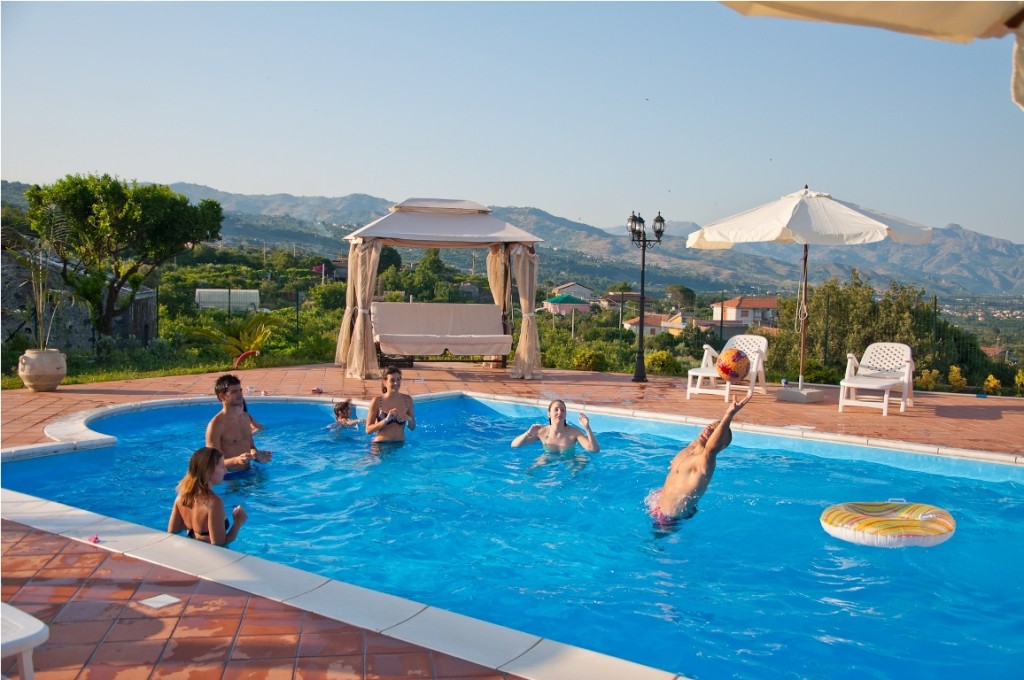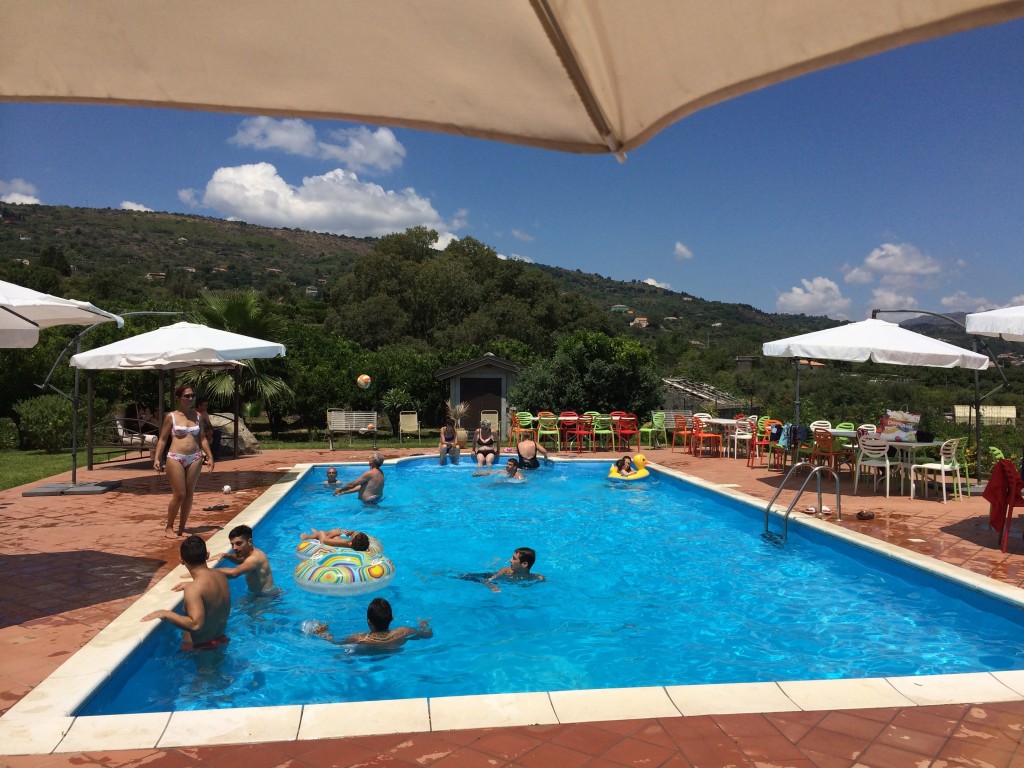With its wonderful climate, Sicily is eminently visitable all the year round and each season has its own distinctive charm. There is always something to do, whether it be lounging on golden beaches, hiking in the mountains, visiting ancient archaeological sites, skiing on Mount Etna or shopping in Palermo’s fashionable boutiques. Wherever you turn you will see evidence of Sicily’s 3,000 years of history as the strategic crossroads of Europe. Nowhere else have Phoenicians, Greeks, Romans, Arabs, Normans, French, Germans, Spanish, Italians, and even the British, left such an enormous collective legacy. The island is a vast open-air museum, a testament to nearly every Mediterranean civilisation of the past.
Taormina
Settled on one of Monte Tauro hills, about 200 meters above sea level, the town is a very popular tourist destination. It overlooks the Ionian Coast and is surrounded by beautiful coasts, luxuriant vegetation and the suggestive Peloritan Mountains. The town boasts even splendid views of Mount Etna top.
We suggest to visit:
- Corso Umberto I
- Palazzo Corvaja
- The Greek Theatre
- Villa Comunale (City Garden)
- The Cathedral
- Palazzo dei Duchi di Santo Stefano
- Letojanni and Giardini Naxos
- Alcantara Gorge
- Mazzarò and Capo Taormina
- Isola Bella

Greek Theater – Taormina

Piazza IV Aprile, Corso Umberto – Taormina

Isola Bella – Taormina
Castelmola
A natural balcony above Taormina, the view from Castelmola is dazzlingly beautiful: from here one can see, among a myriad of prickly pear cactus, the majestic Mt. Etna with towns clinging to its slopes, the Ionian coast, the gulf of Giardini-Naxos, the Cape of Sant´Alessio, the straits of Messina and the Calabrian coast.
Doors and windows are framed in the stone of Taormina, and the colors of houses vary from ocher to beige to antique pink, the sloping roofs are still covered with “Sicilian style” clay tiles, the street signs, the house numbers and shop signs are in stone and wrought iron.
Descending from the rock, one comes to Via De Gasperi, the village main street, which links Piazza Sant´Antonino with the southern quarter. Shops on this street sell Sicilian souvenirs, lace and embroidery work done by the local women.
Bar Turrisi nonchalantly displays its wooden and ceramic phalluses, in an atmosphere that seems to be exclusively for men, the legacy of Magna Grecian beliefs that perhaps only here have survived.
Acireale
Acireale lies along the Ionian Coast on a lava terrace. It is famous for its Thermal Spa and sulphur waters coming from Mount Etna, whose healthy properties were well-known and appreciated even in ancient times by the Greeks and later by the Romans.
Acireale is the largest town on the eastern side of Mount Etna and has been destroyed time and again by eruptions and earthquakes.
It was finally rebuilt after the 1693 earthquake, emerging as a jewel of Sicilian Baroque architecture.

Main Square – Acireale
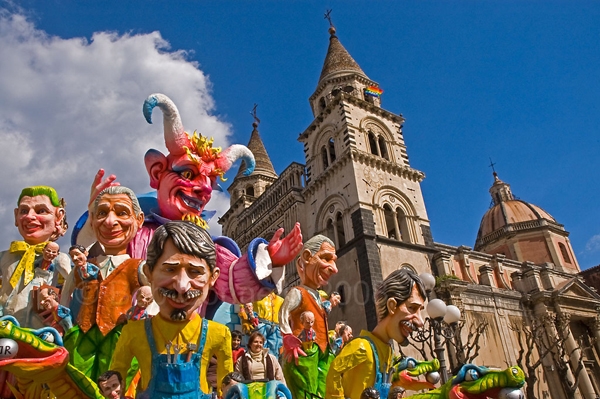
Typical Carnival in February – Acireale
Catania
Cradle of music and theatre, Catania is an ancient, medieval and baroque city situated on the Ionian Coast on the slopes of the suggestive Mount Etna, one of the most active volcanoes in the world.
This city is considered a symbol of revival: it was more than once destroyed by conquerors, flooded with lava or shaken by earthquakes – most radically in 1693, when it was razed to the ground – but it was always rebuilt with great courage and tenacity.
The city hosts a lot of monuments and buildings in a wonderful Baroque style – most of them declared UNESCO World Heritage sites. Its beautiful Roman theatre, amphitheatre and Roman Thermae surely worth a visit.
In Catania you should try the Pasta alla Norma (Giuseppe Bellini was born there), arancini (deep-fried rice balls filled with meat sauce or mozzarella and ham), ice cream and granite (originally made with snow from Mount Etna). Actually, the city is renowned for its Street Food tradition, an explosion of tastes, productions, tecniques and Mediterranenan colors.
We suggest to visit:
- Palazzo Biscari
- Piazza Duomo
- The Cathedral
- Sant’Agata Abbey
- Teatro Bellini
- Roman Theatre
- Castello Ursino
- Home and Museum of Giovanni Verga
- San Nicolò L’Arena
- Via Etnea
- Museo Civico Belliniano
- The Fish Market
- Via Cruciferi

Catania
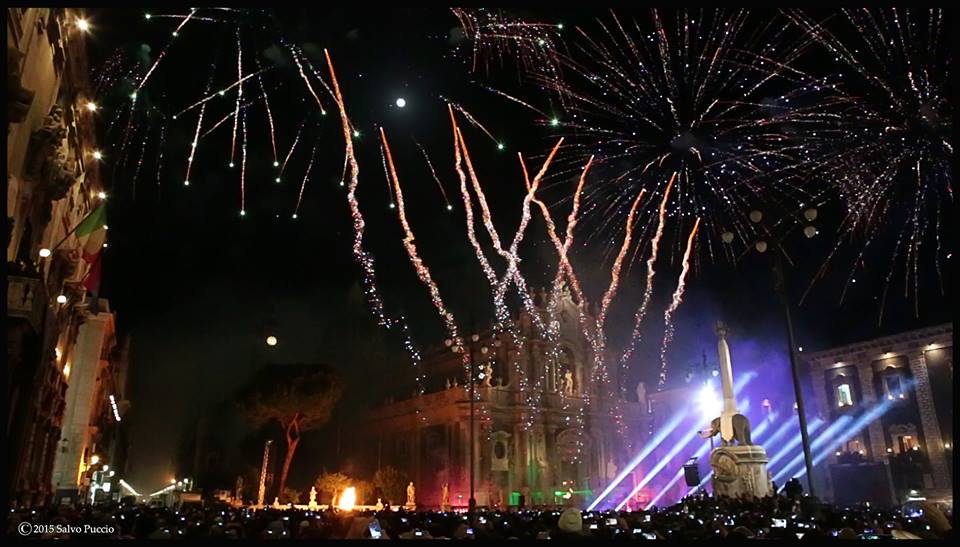
Celebration of Sant’Agata, February – Catania
Mount Etna and surroundings
Mount Etna is fundamental to Sicily’s nature and landscape. The Italian writer Leonardo Sciascia called it “a huge house cat, which purrs quietly and awakens every so often”. Etna is Europe’s largest active volcano and dominates the whole eastern Sicily. Feared and loved, Etna is snow and fire, lush vegetation and black lava. Around the crater you can still see the remnants of numbers of ancient vents. Further down is the eerie, barren landscape of the Valle del Bove.
To better enjoy the magnificent of the Etna, make a trip around it by the Circumetnea railway, the picturesque carriages of the Ferrovia climb up the slopes of Mount Etna and cross along a suggestive landscape of black lava and lush vegetation.
Fascinating views, buildings made of lava stone, beautiful vineyards and wonderful bays and beaches can be admired while visiting this part of the Island. With its immense Natural Park, its panoramas and its puffs of smoke coming out from the peak, the volcano is not only a unique and suggestive attraction, but also a dominant element that has strongly influenced this territory for centuries, at times giving wealth and fertility, at times destroying impetuously..
The area around Mount Etna is famed for its mushrooms, sausage and blood oranges; vineyards cover the lower fertile slopes of “A Muntagna”, as the locals call their volcano, and the wine produced, using local grape varieties such as Nerello Mascalese, is generally of excellent quality.

Mt Etna – Volcano – 3350mt
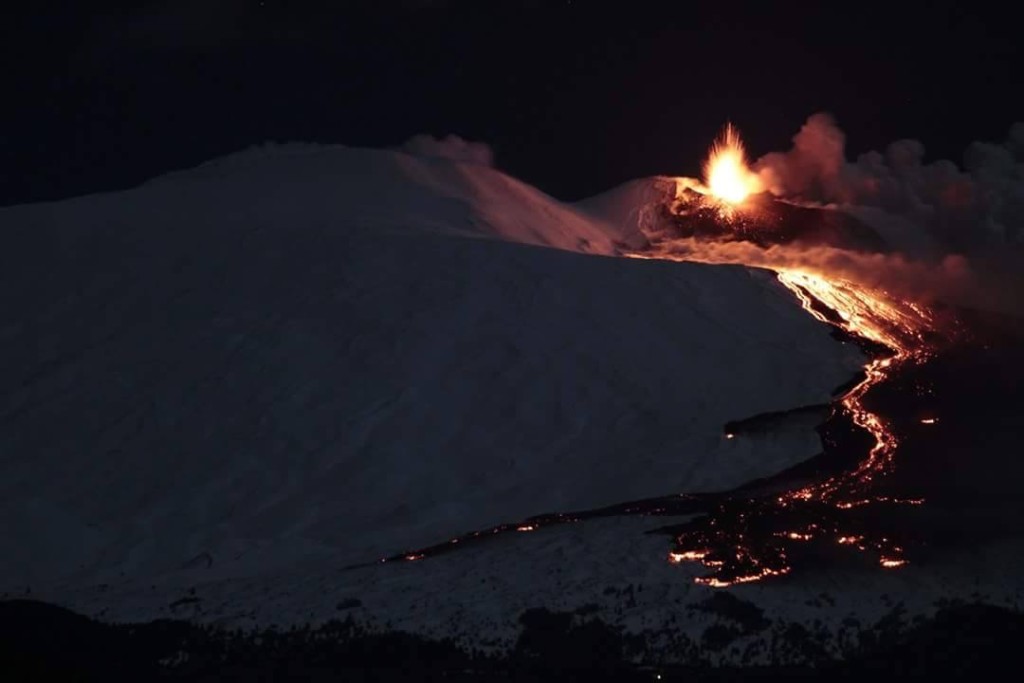
Last Etna Eruption – 02/2015

Crateri Silvestri – Etna Sud – Rifugio Sapienza

Up to the top – Mt.Etna

Etna Eruption
Alcantara Gorge
The Alcantara river, named so by the Arabs since it used to be crossed by through a stone bridge at Calatabiano (al-Qantarah means, as a matter fact “the bridge”), has birth on the Nebrodi and gets fed by a spring at the foot of Mount Etna, just above Randazzo, and by the rivers of Castiglione and Francavilla. The river marks the border line between the province of Messina and the Catania one, and the seam between the large Etna lava cone and the marl-limestone formation of the Peloritans. In times prior to Greek colonization, the crater Moio eruption, located on Etna northern side, had produced a massive lava stream which, once it had reached down the sea, it formed the cape Schisò; over time, the river has crept into this casting, digging a deep and picturesque incision therefore releasing, towards the end of its course, two high walls made of basalt: the Alcantara gorge. It can be reached within walking distance or by lift and the river bed is traversable only with the use of rubber boots, which can be rented on the spot, for a distance of 150 m. The gorge is one of the most fascinating area of the Alcantara River Park, established in 2001. The protected area embraces the river basin and some adjacent areas which extend for 50 km from the water spring near by Randazzo, all the way up to the mouth, at Giardini Naxos, in a process characterized by interesting geological configuration and lush vegetation.

Alcantara Gorges – Valle dell’Alcantara
Syracuse
For those travelling to Sicily today, Siracusa is not to be missed. It is relatively easy to visit in a day, though obviously deserves rather more time. A visit can be split into two easy parts: one dedicated to the archaeological site, the other to the island of Ortygia.
We suggest to visit:
- Greek Theater: this wonderful theater was hewn into the rock of Colle Temenite around the 5th century B.C. It is the largest in Sicily and is still one of the main hubs of cultural life in Siracusa: each year several famous Greek Tragedies are played out in this magical place so full of history.
- Roman Amphitheater: this amphitheater was built during the Augustan period and was recently rediscovered just a short distance from the Greek Theater. It is the third largest amphitheater in Italy after the ones in Rome and Verona. The elliptical-shaped amphitheater is almost entirely hewn into the rock and was built to hold gladiator contests, fierce animal fights and simulations of naval battles.
- Orecchio di Dioniso: this is a deep cave about 65 meters deep, 11 meters wide and 23 meters high. It is famous for its special acoustics, which are due to the acute angle-shape of the ceiling that is similar in shape to the outer ear, hence its name “Orecchio” which means “Ear”. It has unbelievable acoustic powers: a sound produced inside the cave is amplified up to 16 times.
In recent years, Siracusa is becoming known for its lively events: artistic and cultural events liven up this beautiful Sicilian city and attract an international audience. The Theatrical Season at the Greek Theater has become a very popular cultural event, due to the top quality of the plays and to the spectacular and charming open-air “stage”.
The best way to see the island of Ortygia is just to wander. It’s difficult to get lost (it measures just 1km by 500 metres), but packed with over 2,500 years of history. Architectural styles vary widely, encompassing Greek and Roman remains, Mediaeval Norman buildings and a great deal of (relatively) understated Baroque. Restaurants, trattorias and bars abound and it is especially nice to sit out on the western side in the late afternoon, warmed by the sun and with a view over the lagoon.

Main Square – Syracuse

Ortigia – Syracuse





